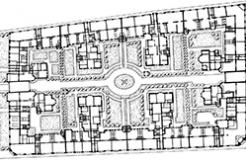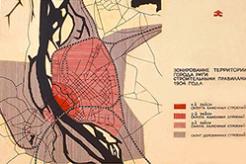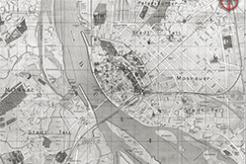




AuthorJānis Krastiņš, Dr. habil. arch.
The Art Nouveau era in Riga coincided with an unprecedented development boom in the urban history of the city. In 1897, there were 282,230 inhabitants in Riga, and more than half a million shortly before WWI. More and more people were moving from rural areas into the city. The ethnic composition of the population also changed. In 1868, there were 42.9 % of Germans, 25.1 % of Russians and only 23.6 % of Latvians. In 1913, these figures were respectively 13.3 %, 19.3 % and 42.2 %. Industry became an important sector of the national economy. As many as 5.7 % of the industrial production of the Russian Empire were produced in Riga, although in Latvia only 1.5 % of the empire’s population lived. By its cargo turnover in 1901, the Port of Riga was the leading port of the Russian Empire.
The general growth of industry and trade, and thriving of culture was accompanied by an unprecedented construction boom in the history of the city. Hundreds of new industrial, residential and public buildings were erected. The speed of the development, which reached its peak in the late 19th century, slightly decreased in the 1900s; but later on it gained even greater momentum. In 1910, 121 new multi-storey masonry houses were built, in 1911 – 158, in 1912 – 186 and in 1913 – 212. Thus, the urban fabric completely changed. Still in the late 19th century, these were predominantly suburban areas with small wooden houses which occupied the territory between the boulevards and the railway circle. In the early 20th century, wooden houses were replaced with multi-storey masonry edifices determining the appearance of the historic centre of Riga as we see it today. After 1904 no new eclectic buildings were built in Riga, as a result a unique collection of Art Nouveau buildings was created, which has no counterparts in the world...
More information will be available in the virtual exhibition, which will be established till April 2016.